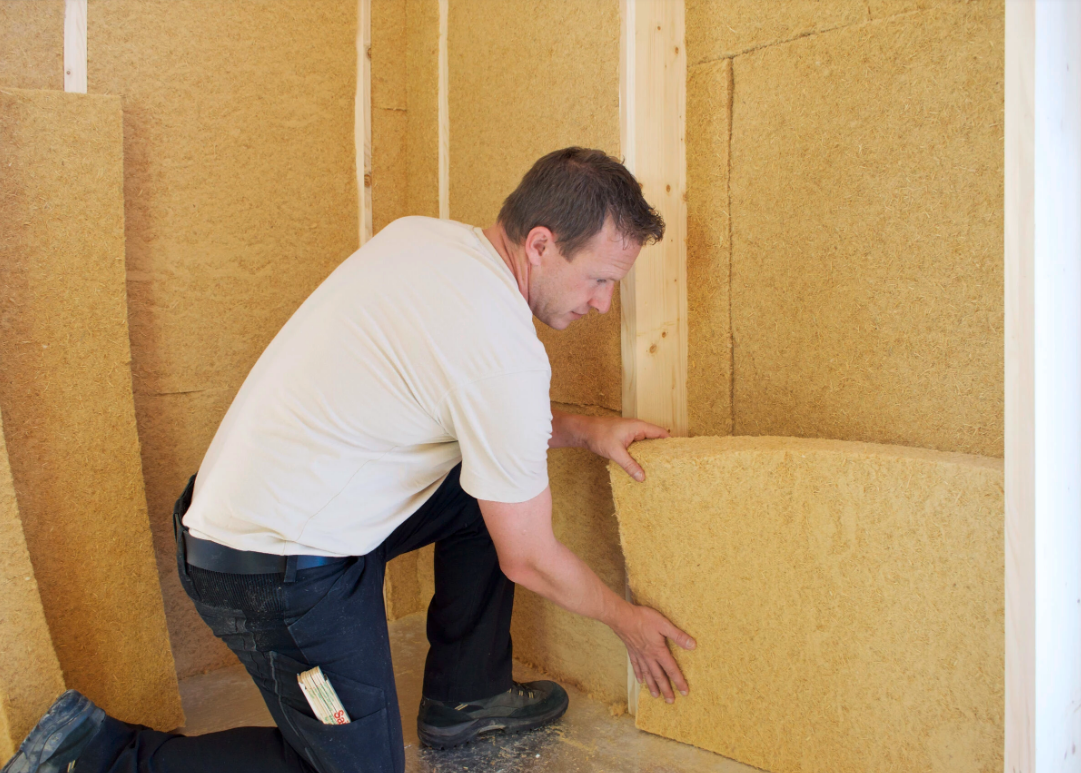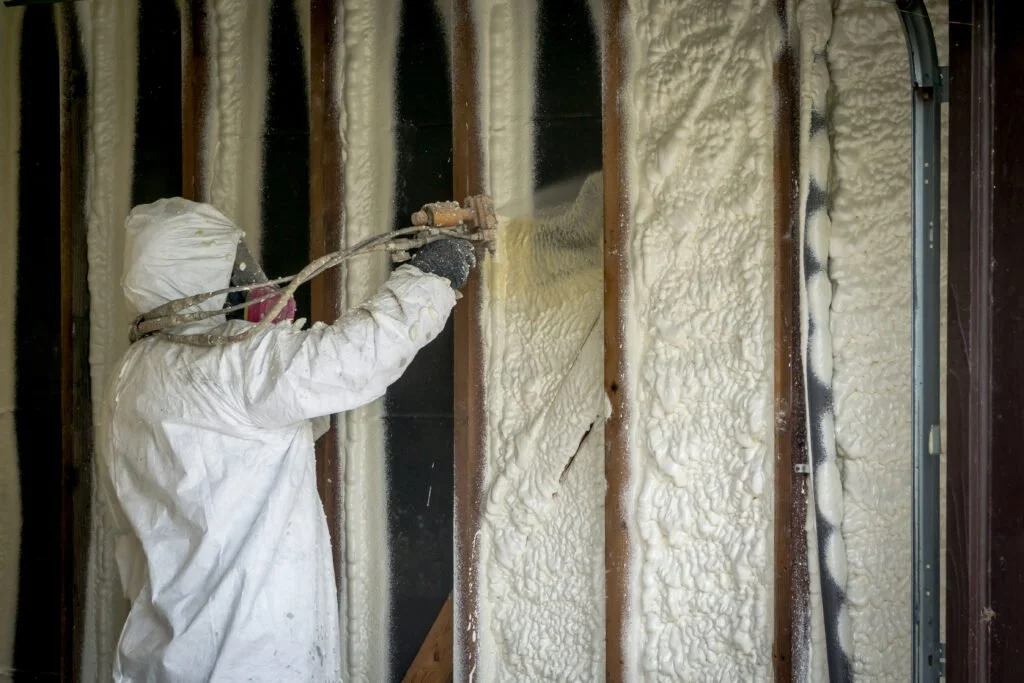Insulation Materials
Types of Insulation
Rigid Board Insulation
This is the densest and most effective type of insulation. It’s used where thickness needs to be minimised and there’s less risk of damp issues - primarily for roofs and internal wall insulation.
Typical materials are polyisocyanurate foam (PIR), phenolic foam, extruded polystyrene (XPS) and expanded polystyrene (EPS).
The sheets are non-breathable and vapour impermeable. They are often coated with reflective foil which helps with the airtightness and vapour resistance as well as reducing radiation absorption and emission. Because they are vapour impermeable they can prevent natural drying of the wall so you need to be careful that there’s no way for water to get into the wall or it could collect over time.
Rigid board insulation usually comes in large sheets (2400mm x 1200mm is common) which can be cut to fit. The joints between the sheets should be sealed with aluminium tape to maintain airtightness.
Semi-Rigid “Batts”
These are typically denser forms of the wool insulation described below, often blended with a small percentage of polymer for elasticity. Insulating performance is not as good as rigid boards, but this form typically has some breathability which is desirable, especially in older homes.
Typical materials include wood fibre, rock/mineral/glass wool and sheep’s wool. They are self-supporting but “squishy” making them well-suited to “friction fit” installation between timber studwork.
Wool
Wool insulation is flexible and usually supplied in compressed rolls. It is usually the cheapest type of insulation. It doesn’t hold its shape so it is most suitable for horizontal applications such as loft or floor insulation. The denser varieties can also be fitted between timber battens as internal wall insulation.
Common materials include mineral wool (also known as rockwool) and glass wool (also known as fibreglass). Of these, mineral wool is usually denser with the benefit that it’s better at soundproofing and more water-resistant. Fibreglass insulation is usually lighter and a bit cheaper. Both forms can cause itching so be sure to wear gloves and a mask when working with them.
We’d recommend avoiding natural wools such as sheep’s wool for insulation because these can be attractive to insects and can degrade over time.
Loose Fill
In some tight spaces fitting even wool insulation could be difficult. In these situations loose fill insulation may be suitable. It is completely unstructured and is scattered or blown into place through an “elephant trunk” hose. The typical usage would be in cavity wall insulation or attics with restricted access.
The most common form of loose fill insulation is cellulose fibre. This is made by treating recycled newspaper to make it fire-resistant. The other type you might see if polystyrene balls which are sometimes covered with a light glue to help fix them in place.
Spray Foam
Sprayed polyurethane foam is an appealing idea for insulation. The foam can be quickly applied even in hard-to-reach areas and its insulating properties are very good, requiring less thickness than wool insulation.
However, there are also some major drawbacks. If applied carelessly, spray foam can block ventilation leading to condensation and eventual rotting of roof timbers. Because it’s bonded directly to the structure, there’s no good way to inspect and maintain the material behind without completely removing the insulation.
The concerns around spray foam are so serious that many mortgage lenders won’t lend to those buying a property with spray foam, meaning you could have difficulty selling your house.
Our advice - avoid spray foam insultation entirely, especially if the supplier has cold-called you which is a warning-sign.
Specific Insulation Materials
The table below shows the most common materials used for domestic insulation. These range from high-performance but expensive Aerogel to low cost options such as glass wool.
For meaningful comparison, the thickness and cost of each material to achieve a U-value of 0.2 has been given. This has been calculated assuming that the material is acting alone, i.e. no contribution from the existing wall, floor or ceiling. The actual thickness required for your specific situation will need to be calculated to achieve the U-value required by Building Regs, taking into account the contribution from the existing structure. If you need personalised advice with this calculation please Contact Us.
*PIR and glass wool are the most commonly-used materials for walls and roofs respectively
**See our page for an explanation of U-values
Tool Kit
Links connect to suitable products on external sites. Please contact us if you notice any broken links.








